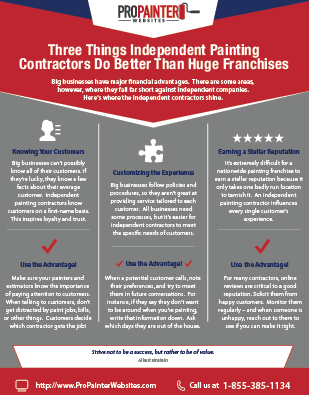Selecting The Right Colors: An Overview To Commercial Outside Repainting
Selecting The Right Colors: An Overview To Commercial Outside Repainting
Blog Article
Written By-Kondrup Soelberg
When it concerns industrial external paint, the shades you choose can make or break your brand's allure. Understanding how various shades affect perception is key to drawing in clients and developing trust. However it's not almost personal choice; neighborhood patterns and policies play a considerable duty too. So, just how do you discover the ideal equilibrium between your vision and what reverberates with the area? Let's check out the important aspects that assist your color options.
Recognizing Color Psychology and Its Effect On Business
When you choose shades for your company's exterior, recognizing color psychology can considerably affect just how prospective clients regard your brand.
Colors stimulate emotions and established the tone for your company. For example, blue commonly conveys trust and professionalism and reliability, making it excellent for financial institutions. Red can develop a feeling of urgency, perfect for restaurants and inventory-clearance sale.
Meanwhile, visit the up coming website signifies development and sustainability, attracting eco-conscious customers. Yellow grabs attention and sparks optimism, but excessive can overwhelm.
Consider your target market and the message you wish to send out. By selecting the appropriate shades, you not only boost your curb charm however also straighten your image with your brand values, eventually driving customer involvement and commitment.
Analyzing Local Trends and Regulations
How can you guarantee your outside painting choices resonate with the neighborhood? Start by looking into neighborhood patterns. Go to close-by services and observe their color design.
Bear in mind of what's prominent and what feels out of area. This'll help you align your choices with neighborhood visual appeals.
Next, check neighborhood laws. Many towns have guidelines on outside colors, especially in historical areas. You don't intend to spend time and money on a combination that isn't certified.
Involve with local entrepreneur or neighborhood teams to gather understandings. They can provide beneficial comments on what colors are well-received.
Tips for Integrating With the Surrounding Environment
To create a cohesive appearance that mixes seamlessly with your environments, take into consideration the natural environment and building styles close by. Start by observing the shades of nearby buildings and landscapes. Natural tones like greens, browns, and muted grays commonly work well in all-natural setups.
If https://www.realtor.com/advice/home-improvement/how-much-should-you-tip-general-contractors/ is near vivid metropolitan locations, you might select bolder colors that mirror the local power.
Next, think about the architectural design of your structure. Typical designs may benefit from timeless colors, while modern styles can embrace contemporary schemes.
Check your color choices with examples on the wall to see just how they connect with the light and atmosphere.
Finally, bear in mind any type of regional standards or area appearances to guarantee your choice boosts, rather than encounter, the environments.
Conclusion
Finally, picking the best colors for your commercial outside isn't nearly visual appeals; it's a critical decision that impacts your brand's assumption. By using shade psychology, considering local fads, and making certain harmony with your environments, you'll create a welcoming ambience that attracts clients. Don't forget to check examples before devoting! With https://garage-painters-near-me55320.blog-a-story.com/15968407/learn-more-about-the-methods-which-seasonal-elements-can-affect-the-success-of-business-external-painting-and-figure-out-the-very-best-times-to-accomplish-lasting-results-for-your-project , you can elevate your business's curb appeal and foster long-term customer engagement and loyalty.
